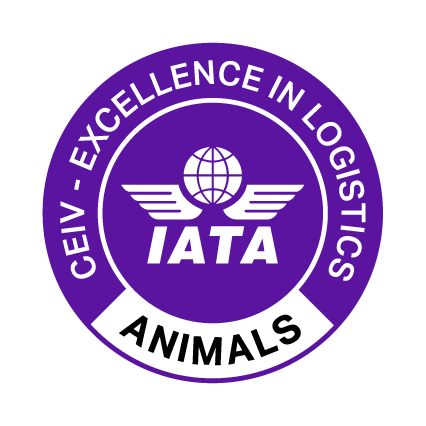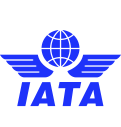Need Help?
Animal safety and welfare: our priority

Animal transportation by air is considered to be the most humane and expedient method of transportation over long distances. However, it doesn't come without its challenges which are due to the very specific requirements that supply chain stakeholders need to abide by to ensure animal safety and welfare while being transported by air.
The industry has voiced concerns over non-compliance with handling and transport practices, along with the need to reinforce training requirements and create visibility for best players who adhere to regulations. Not following requirements can lead to consequences such as additional stress, injury and even death of animals.
Driven by industry standards, the Center of Excellence for Independent Validators (CEIV) for Live Animals Logistics establishes baseline standards to improve the level of competency, infrastructure and quality management in the handling and transportation of live animals throughout the supply chain.
Organizations that undergo training, an assessment and validation requirements are granted a certificate issued by IATA and are listed in a registry on the IATA webpage upon successful completion and compliance with the program standards.
Importance Notice: CDC Temporary Dog Entry Ban
Following the CDC’s decision to temporarily suspend the entry of dogs into the United States from countries classified as high risk for dog rabies, carriers can refer to the Live Animals homepage for essential information and documents.
Learn more about the benefits of the CEIV Live Animals Program:
Key Benefits
- Improve animal welfare and safety through appropriate quality and risk management
- Enhance standardization and professionalism in the handling and transportation of live animals in a multimodal environment
- Enforce compliance with the Live Animal Regulations (LAR)
- Elevate staff competency through efficient and robust training programs
- Enable increased collaboration amongst stakeholders and certified trade lanes
Need Help?
The process to achieve CEIV Live Animal certification and to maintain it includes the following 6 parts:
1: Planning
Setup a project organization team. Within the team define the scope of work, accountabilities, and deliverables, and communication plan.
2: Training
Follow the Live Animals Cargo Logistics Management training destined for personnel involved in the handling and transport of live animals and working for airlines, ground handling, freight forwarding and animal shipping companies.
3: Assessment
Carry out an assessment of the handling and transport of live animals against the dedicated CEIV Live Animals Logistics audit checklist to ensure compliance with existing standards, requirements and the Live Animals Regulations (LAR).
4: Validation
Conduct a final validation to verify the findings and the gap analysis made during the assessment have been addressed to ensure that the organization meets the program's objectives.
5: Certification
Being recognized and registered as a “Center of Excellence for Live Animals Logistics” after successful completion of the training and validation parts. The certificate is valid for 36 months.
6: Re-certification
It includes a refresher training and a re-validation to check and ensure continued compliance with the program's objectives.
The CEIV Live Animals program is based on the IATA Live Animals Regulations (LAR), international and national standards and requirements.
IATA is working closely with Governments and International Organizations to develop the standards that built a global industry:
- 45 countries (pdf) and regions have formally adopted the provisions of the LAR as part of their legislation.
- International Organization or Governmental Agencies such as the World Organisation for Animal Health (OIE), The Convention on International Trade in Endangered Species of Wild Fauna and Flora (CITES) or US Fish and Wildlife Service (USFWS) all reference the IATA LAR as the guidelines that must be followed for the carriage of live animals by air;
- The European Union has adopted the IATA LAR as the minimum standard for transporting animals by air that member states need to comply with.
CEIV Trade Lane Certification
A CEIV trade lane is a general classification of any transport-related activities between two defined countries. A trade lane is CEIV Pharma/Live Animals/Fresh certified if the origin and destination is being linked by CEIV certified transport companies (such as an airline, ground handler, freight forwarder or a trucking company), throughout each stage of the journey from origin to destination (i.e. at no point is the shipment handled or transferred to a non-CEIV certified entity or a subcontracted entity not under the strict SLAs established under the CEIV certification process).
It is also important to note that a company, such as an airline, is not CEIV certified for its network (including all online stations) unless all their stations went through the certification and/or Ground Service Providers have obtained CEIV Certification.
- Find out the latest developments about IATA's CEIV Animal program. Download the CEIV Animal press clips (pdf)
- The City of London's Heathrow Animal Reception Center has given its formal endorsement letter (pdf) to the CEIV Live Animals program.
Certified companies
The list of all certified companies are available in IATA ONE Source
Interested in becoming CEIV Live Animals certified?
